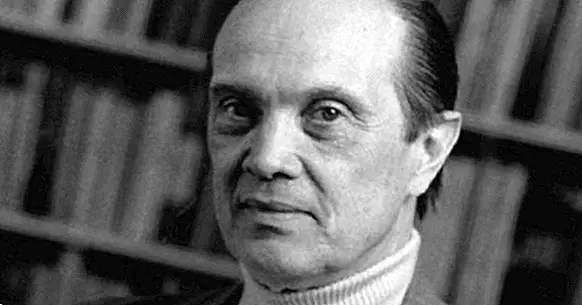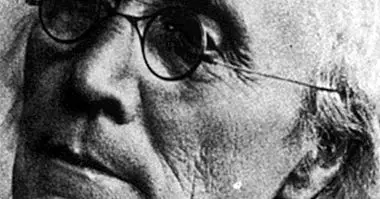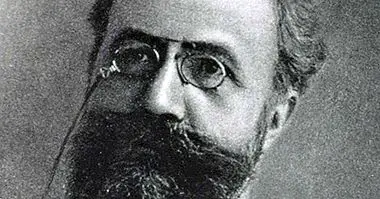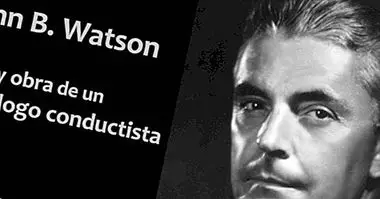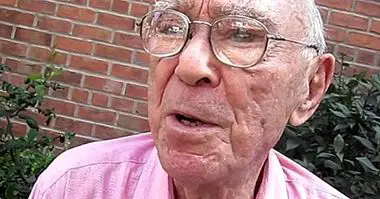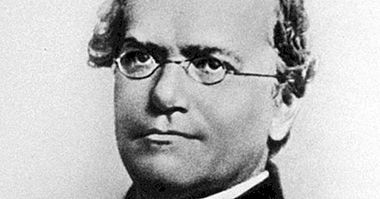George Armitage Miller: biography of a pioneer of cognitive psychology
George A. Miller (1920-2012) was an American psychologist who contributed very relevant knowledge for psychology and cognitive neurosciences. Among other things, he analyzed how human beings process the information we receive, and was the first to maintain that our memory has the capacity to store up to seven differential elements per moment.
Then we'll see a biography of George A. Miller , as well as some of his main contributions to cognitive psychology.
- Related article: "Cognitive psychology: definition, theories and main authors"
George A. Miller: biography of a cognitive psychologist
George Armitage Miller, better known as George A. Miller, was born on February 3, 1920 in Charleston, United States. In the year 1940 he received a higher degree in history and speech, and a year later, in 1941, he obtained a master's degree in the same area. Both degrees were part of the University of Alabama program.
Finally in 1946 He earned a Ph.D. in psychology from Harvard University .
As part of his activities within the latter institution, Miller collaborated in the communications arm of the US Army (Army Signal Corps) during the Second World War. In fact, in the year of 1943, Miller conducted a military investigation related to the intelligibility of speech and sound; themes that he moved years later in his studies on psycholinguistics.
Subsequently, he served as a professor and researcher at the same university, as well as at the Massachusetts Institute of Technology and the Rockefeller University. Years later, in 1979, he started academic activities at Princeton University, where he was recognized as professor emeritus in 1990.
Likewise, he was a member of the prestigious American Academy of Arts and Sciences and of the National Academy of Sciences. He was also co-founder (together with Jerome S. Bruner) of the Center for Cognitive Studies at Harvard, in 1960, and participated in the establishment of the Princeton Cognitive Science Laboratory in 1986.
Thanks to his theories about short-term memory, Miller is recognized as one of the founders of cognitive science and cognitive neuroscience . He also made relevant contributions in psycholinguistics and in human communication studies, which earned him the Outstanding Vitality Contribution for Psychology award from the American Psychological Association (APA).
- Maybe you are interested: "History of Psychology: authors and main theories"
From the behavioral paradigm to cognitive psychology
During the years in which George A. Miller was a researcher in psychology (between 1920 and 1950), the behavioral paradigm was on the rise. One of the things that behaviorism maintained was that the mind could not be studied scientifically, since it was not an entity whose reality was observable.
In other words, for behaviorism, there was no possibility of studying mental processes scientifically, because they are states and operations that can not be observed directly.
Miller, on the other hand, argued that the behavioral paradigm could be very limiting. From your perspective, mental phenomena could be a legitimate object of study for empirical research in psychology.
Studies in short-term memory
Miller was interested in measure the ability of the mind to establish information processing channels . From the research he did, he realized that people could reliably associate between four and ten continuous stimuli.
For example noises, line lengths or a series of points. People could quickly identify the stimulus as long as there were seven or less, and could retain between five and nine elements in immediate memory.
With this he developed one of his greatest proposals: the short-term memory in the human being is not unlimited, but has the general capacity to store up to seven pieces of information. Likewise, said capacity can be modified according to how subsequent processes are carried out, as the recoding of information .
The above is recognized to this day as one of the basic assumptions of information processing, precisely because it maintained that human memory can only efficiently capture a total of seven units at the same time (more or less two additional pieces of information) .
For example, the latter occurs when when we have to distinguish between different sounds , or when we have to perceive an object through a disguised or very fast glance.
Impact on psychology
Miller's proposals significantly impacted subsequent research in cognitive psychology, which ultimately led to develop and validate psychometric tests for the study of memory and other cognitive processes.
Likewise, it allowed to generalize the idea that it is important to limit the number of elements that are presented to a person when we want to retain certain information (for example the digits of a number or the number of stimuli that make up a presentation, etc.).
Outstanding works
Some of George A. Miller's most important works are Language and communication, of 1951; Plans and behavior structure, of 1957; Y The magic number seven, plus or minus two: some limitations in our ability to process information , of 1956, which is perhaps the work that marked his beginnings as a prestigious cognitive psychologist.
Bibliographic references:
- Doorey, M. (2018). George A. Miller. Encyclopedia Britannica. Retrieved August 29, 2018. Available at //www.britannica.com/biography/George-A-Miller.
- Pinker, S. (2012). George A. Miller (1920-2012). Obituaries. American Psychological Association. Retrieved August 29, 2018. Available at //stevenpinker.com/files/pinker/files/miller_obituary.pdf.

